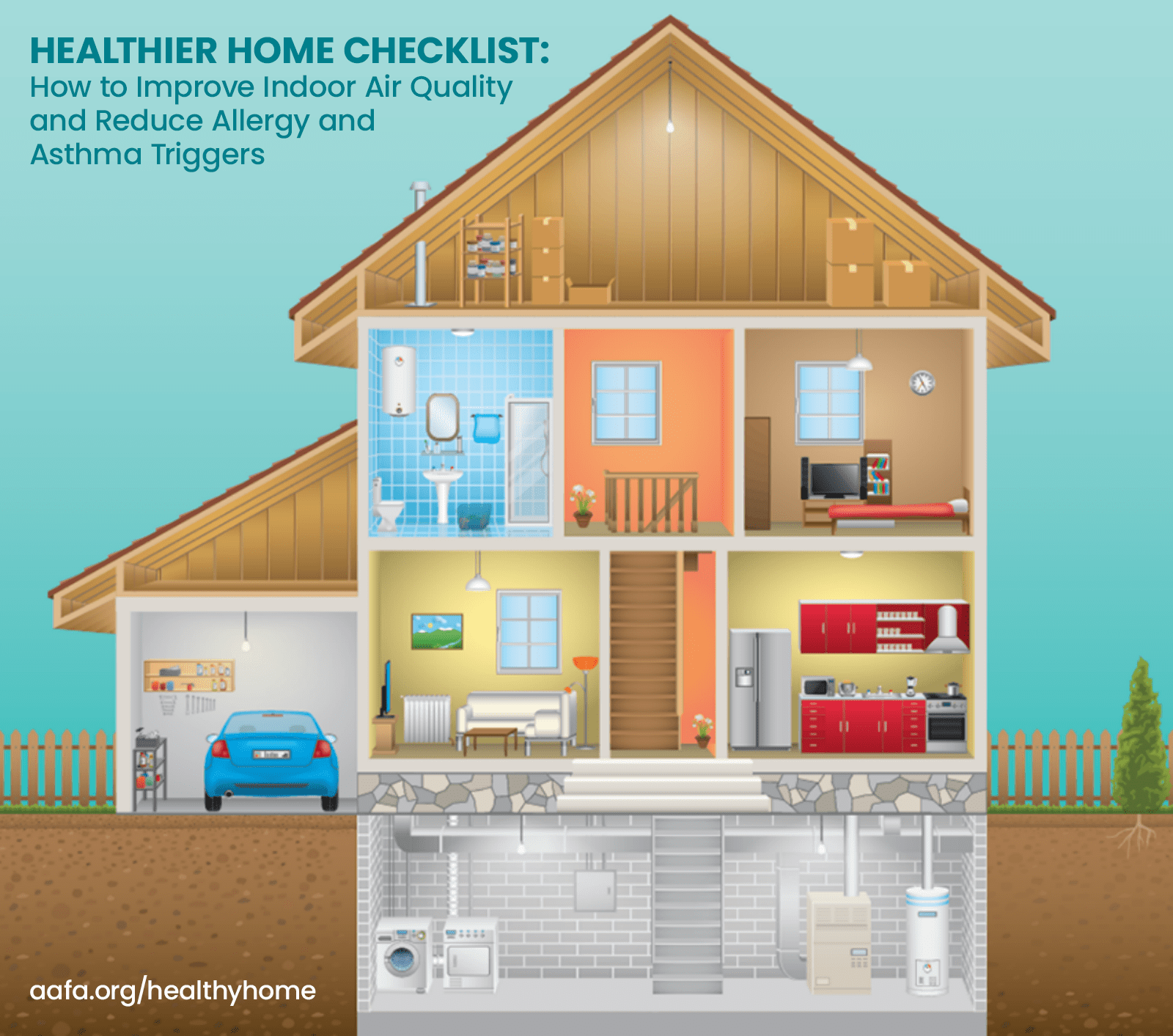The health of your home can affect your personal health. April is National Healthy Homes Month, led by the Office of Lead Hazard Control and Healthy Homes (OLHCHH) at the U.S. Department of Housing and Urban Development (HUD).
This year’s theme is “MAKING AN IMPACT: Healthy, Safe, and Resilient Homes.” Each week will have its own focus:
- Week 1 – Healthy Homes Investments Make Local Impact
- Week 2 – Housing Professionals' Role in Healthy Homes
- Week 3 – Impacts of Healthy Homes Interventions on Public Health
- Week 4 – Making Home Healthy, Safe and Resilient
The Asthma and Allergy Foundation of America (AAFA) joins with HUD and OLHCHH to help raise awareness about ways to make your home healthier, especially for people with asthma and allergies.
Why Is It Important to Have a Healthier Home?
There are many factors that can affect your home’s health. Mold from a leaky roof or lead from old paint are some examples. When you have asthma or allergies, triggers and allergens in your home – such as dust, pests, and mold – can cause asthma and allergy symptoms. In the U.S., people spend about 90% of their time indoors, whether at school, home, or in the workplace.1 Reducing your exposure to your triggers is an important part of managing your asthma and allergies.
How Does AAFA Advocate for Healthier Homes?
Week 1 of National Healthy Homes Month focuses on the connection between housing and health, especially in marginalized communities.
The quality of housing is a major factor in asthma disparities in the United States. Families living in low-income housing are more likely to be exposed to harmful asthma triggers and are at a greater risk of having severe asthma. These families often don’t have the resources to address health issues in the home.
AAFA advocates for state and federal policies that promote healthy settings for people with asthma or allergies in various settings, including in rental and low-income housing. We also support repayment for preventative services and home assessments that provide asthma education for people with severe asthma.
AAFA is a member of several coalitions that also support improving housing on a national and community level, including the National Safe and Healthy Housing Coalition (NSHHC), DC Healthy Housing Collaborative (DCHHS), and California Asthma Financing Workgroup.
How Can I Make My Home Healthier?
AAFA offers various resources to help improve your indoor environment.
AAFA’s Healthy Settings webpage offers a list of resources and services to promote healthier environments in a variety of settings. If you are a homeowner or renter, the Healthy Housing section of the webpage provides tools, guides, and local and national resources to help make your home healthier.
AAFA’s Healthier Home Checklist is a great tool to help you reduce asthma and allergy triggers in your home. The interactive tool shows you how to tackle these triggers in each room in your home.
AAFA's asthma & allergy friendly® Certification Program helps you make informed decisions on products that can help reduce your exposure to asthma triggers and allergens. When you are shopping for products for your home, look for the CERTIFIED asthma & allergy friendly® mark. It indicates the product has passed our testing standards. Visit aafa.org/certified to search for CERTIFIED products. There you can also learn more about the program.
Here are more resources about making your indoor air healthier:
- Improve Your Indoor Air Quality to Improve Your Health
- Why Healthy Indoor Air Quality Is Important
- Find Out If Your Home Is Asthma and Allergy Friendly with Our Healthier Home Assessment
- Sources of Air Pollution in Your Home That May Cause Asthma and Allergy Symptoms
- Breathe Easier: Improving Indoor Air Quality in Your Bedroom, Living Room, Kitchen, and Attic or Basement
Get answers to your asthma and allergy questions on our online forums.
GET SUPPORT NOWReferences
1. Environmental Protection Agency. Questions about your Community: Indoor Air. http://www.epa.gov/region1/communities/indoorair.html


Comments (0)